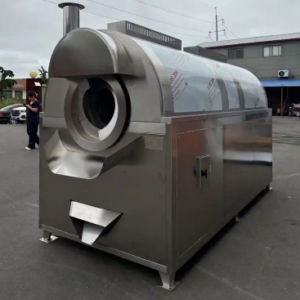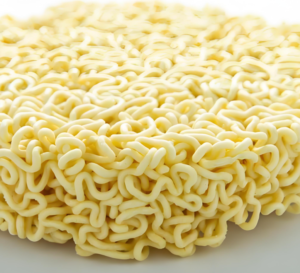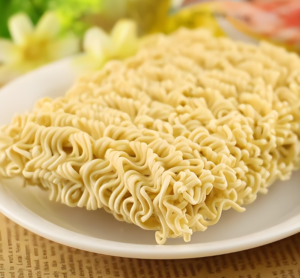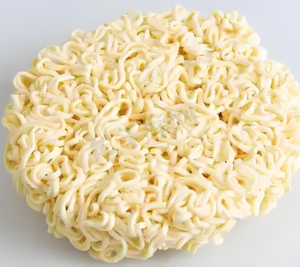<h1>The Comprehensive Guide to Fish Feed Manufacturing Process</h1>Introduction to Fish Feed Manufacturing
Fish feed plays a crucial role in the global aquaculture industry, supporting sustainable fish farming and meeting rising seafood demands. As a key component of B2B trade in agricultural products, understanding the manufacturing process helps businesses optimize production, reduce costs, and ensure high-quality outputs.
fish feed extruder
ToggleThis article explores the step-by-step process of fish feed production, from raw material selection to final packaging. Whether you’re a supplier, manufacturer, or exporter in the foreign trade sector, gaining insights into these techniques can enhance your competitive edge in the market.
Key Ingredients in Fish Feed
Fish feed is formulated to provide balanced nutrition for various fish species, promoting growth, health, and disease resistance. The primary ingredients include proteins, carbohydrates, fats, vitamins, and minerals, sourced from both plant and animal origins.
Common protein sources are fish meal and soybean meal, which offer essential amino acids. Carbohydrates from grains like wheat or corn provide energy, while fats from fish oil support omega-3 development. Manufacturers must select ingredients based on the target fish species, such as salmon or tilapia, to meet specific dietary needs.
Trace elements like vitamins C and E, along with minerals such as calcium and phosphorus, are added to boost immunity. In B2B contexts, sourcing sustainable and cost-effective ingredients is vital for maintaining profitability in international trade.
The Manufacturing Process Overview
The fish feed manufacturing process involves several precise stages to transform raw materials into high-quality pellets or extruded feeds. This section breaks down the key steps, ensuring efficiency and nutritional integrity.
Raw Material Selection and Preparation
Quality begins with careful selection of raw materials. Suppliers in the foreign trade industry often source ingredients globally, prioritizing purity and nutritional value to comply with international standards like those from the FAO.
Once selected, materials undergo preparation, including cleaning to remove impurities and grinding to achieve uniform particle sizes. This step prevents contamination and ensures even mixing, which is critical for feed efficacy.
Moisture content is also controlled during preparation to avoid spoilage. Businesses can leverage advanced testing tools to verify ingredient quality, reducing waste and enhancing product reliability in export markets.
Mixing and Grinding
Mixing combines all ingredients in precise ratios based on the feed formula. This stage uses industrial mixers to blend proteins, carbohydrates, and additives thoroughly, creating a homogeneous mixture.
Grinding follows to break down larger particles, improving digestibility for fish. Automated systems in modern factories allow for accurate measurements, minimizing errors and ensuring consistency across batches.
For B2B exporters, this process is an opportunity to customize blends for different clients, such as tailoring feeds for tropical or cold-water species, which can boost market differentiation.
Extrusion and Pelleting
Extrusion is a core technique where the mixed ingredients are heated and forced through a die under high pressure. This process gelatinizes starches, improves nutrient bioavailability, and creates floating or sinking pellets.
Pelleting, an alternative method, compresses the mixture into dense forms without extrusion. Both methods enhance feed stability in water, reducing waste and pollution in fish farms.
In global trade, extrusion technology allows manufacturers to produce feeds that meet diverse regional preferences, such as slower-sinking pellets for pond farming in Asia or extruded options for intensive systems in Europe.
Drying and Cooling
After extrusion or pelleting, the feed must be dried to reduce moisture content and prevent microbial growth. Industrial dryers maintain temperatures that preserve nutrients while achieving the desired shelf life.
Cooling follows drying to stabilize the product and prevent clumping. This step is essential for safe storage and transportation, especially for exporters dealing with long shipping routes.
Effective drying and cooling processes can extend product longevity, allowing B2B companies to reach distant markets without compromising quality, thus supporting sustainable supply chains.
Coating and Additives Application
Coating involves applying oils, flavors, or attractants to the outer layer of pellets. This enhances palatability, encouraging fish to consume the feed fully and efficiently.
Additives like enzymes or probiotics are incorporated to improve digestion and health outcomes. Manufacturers must ensure these are FDA-approved or equivalent for international compliance.
In the B2B sector, coating innovations can differentiate products, such as developing feeds with natural attractants for organic aquaculture, appealing to eco-conscious buyers worldwide.
Packaging and Storage
Final packaging protects the feed from environmental factors like humidity and pests. Options include bags, bulk containers, or vacuum-sealed packs, depending on the volume and destination.
Storage guidelines emphasize cool, dry conditions to maintain nutritional value. Proper labeling with expiry dates and nutritional information is mandatory for trade regulations.
For foreign trade businesses, efficient packaging reduces logistics costs and ensures products arrive in prime condition, fostering long-term partnerships with global distributors.
Quality Control and Assurance in Fish Feed Production
Quality control is paramount in fish feed manufacturing to guarantee safety and efficacy. Regular testing for contaminants, such as heavy metals or mycotoxins, helps meet standards like EU regulations or Codex Alimentarius.
Laboratories use techniques like proximate analysis to verify protein and fat levels. Implementing HACCP systems prevents hazards, ensuring feeds are safe for fish and, indirectly, for human consumption.
In B2B trade, robust quality assurance builds trust with buyers. Certifications like ISO 22000 can open doors to premium markets, while ongoing audits help adapt to evolving industry standards.
Innovations and Sustainability in Fish Feed Manufacturing
The fish feed industry is evolving with innovations like alternative proteins from insects or algae, reducing reliance on wild-caught fish and promoting sustainability.
Advanced technologies, such as AI-driven formulation software, optimize recipes for cost and nutrition. These tools enable precise production, minimizing waste and environmental impact.
For B2B exporters, adopting sustainable practices, like using recycled packaging or low-carbon processing, appeals to green-conscious markets. This not only complies with regulations but also drives competitive advantages in global trade.
Frequently Asked Questions
Below are common questions about fish feed manufacturing, answered to provide clarity for industry professionals.
What are the main challenges in fish feed production? One major challenge is sourcing sustainable ingredients amid growing demand. Manufacturers must balance cost with environmental impact, often by integrating plant-based alternatives.
How does the manufacturing process affect fish health? Proper processing ensures feeds are digestible and nutrient-rich, reducing disease risks. Poor techniques can lead to nutrient loss, impacting growth and farm productivity.
What regulations govern fish feed in international trade? Key regulations include those from the FDA, EU feed laws, and Codex standards. Exporters need to comply with import requirements of target countries to avoid delays.
Can fish feed be customized for different species? Yes, formulations are tailored based on species needs, such as higher protein for carnivorous fish like trout. This customization is a growing B2B service opportunity.
What role does technology play in modern manufacturing? Technology enhances efficiency through automated mixing and real-time quality monitoring, allowing for scalable production and reduced errors in large-scale operations.
How can manufacturers ensure feed sustainability? By using circular economy principles, like repurposing by-products from other industries, manufacturers can lower their carbon footprint and appeal to eco-friendly markets.
What is the future of fish feed manufacturing? The future involves more plant-based and lab-grown ingredients, driven by innovation to support sustainable aquaculture growth globally.
Conclusion
In summary, mastering the fish feed manufacturing process is essential for B2B success in the foreign trade sector. From selecting high-quality ingredients to implementing innovative techniques, each step contributes to efficient, sustainable production. By prioritizing quality control and staying abreast of advancements, businesses can enhance their offerings, meet global demands, and foster a thriving aquaculture industry. Embrace these insights to drive your operations forward and achieve long-term profitability.








